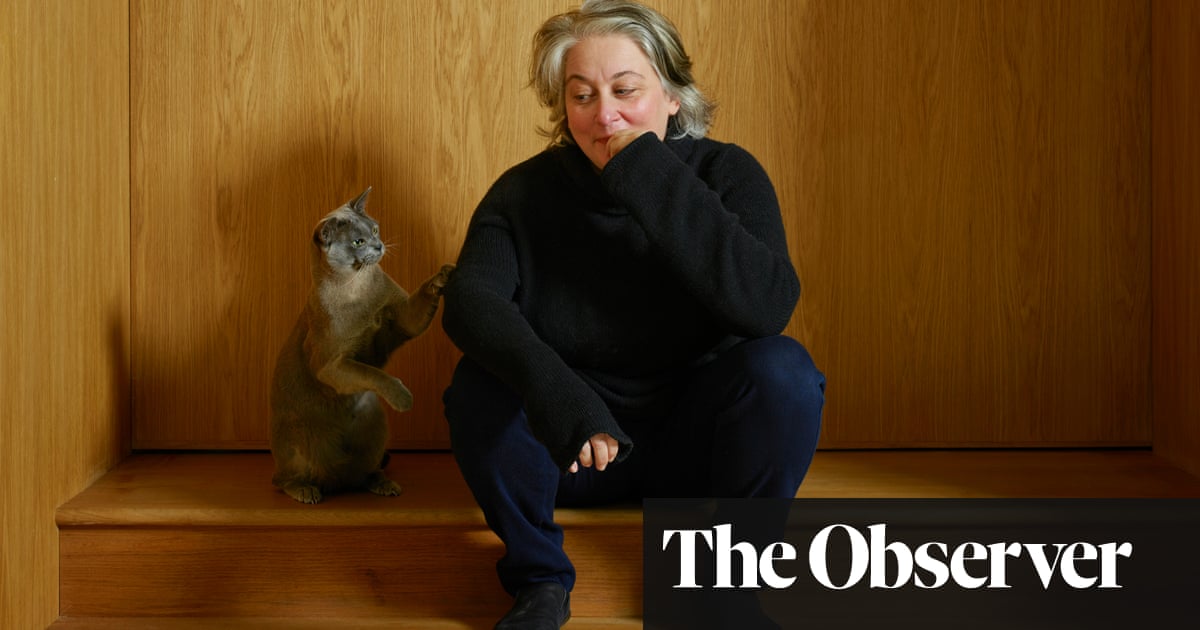
As lockdown continues, Guardian Opinion is reviving its A book that changed me series, an opportunity for writers to select the very best reading to help get us through these uncertain times, with a new instalment every Monday.
I would have loved to have been a fly on the wall when Gertrude Stein, the high priestess of early 20th-century modernist art and writer of baffling radical novels, came up with an audacious idea to make some money.
The plan was that she would write about her own life in the guise of writing the autobiography of her partner, Alice B Toklas. If Alice were to narrate the book, it meant that she, Gertrude, could use her beloved as an avatar to speak about her own (often mocked) writing and offer a personal view of her friendship with some of the famous artists and writers she had met in Paris between 1903 and 1932.
It was not lost on Stein that her relationship with Picasso, who was 24 when she met him, and Matisse, who was 35 (never mind Ernest Hemingway and F Scott Fitzgerald), would be of interest to a wide American audience when the book was published in 1933. This proved to be true and to her shame and delight, The Autobiography of Alice B Toklas – her most conventional book – became her most commercial.
This would not be so interesting if Stein herself were not so interesting. It is sometimes forgotten that she trained in medicine rather than literature, beginning her student years in 1893 at Radcliffe College (now part of Harvard University) tightly laced into a corset. She became “irrevocably bored” with her medical studies and 10 years later, escaped to Paris, flung that corset off, began to collect the art that would light up the 20th century and found herself a wife.
Any young writer keen to find female literary role models whose lives do not end with suicide would be encouraged by how Stein was unfashionably good at life and happy in love. Her four-year training in psychology with William James, her fascination with visual composition (Cézanne was a major early influence) and her literary interest in the techniques of cubism are evident in all her writing. Yet, oddly, it was when she wrote in the faux voice of Alice B Toklas, that I really began to want to reread her work.
It was as if this literary strategy, or trick, somehow freed her own voice, and in so doing, gave me access to her beautiful mind and the impeccable cadence of her sentences. Her fluent, conversational and slightly strange prose is a rollicking read. When I began writing my own “living autobiographies” (Things I Don’t Want to Know, The Cost of Living), so called because they are written in the present tense of life and not in wise retrospect at the end of life, I took note of why I enjoyed spending time with Stein’s voice in this particular book.
For a start, her thoughts on anything at all still feel new and uniquely her own. She recalls how the public were so infuriated by Matisse’s painting of his wife La Femme au chapeau when it was first exhibited in Paris, they tried to scratch off the paint. As Stein tells us through Alice: “It was very strange in its color and in its anatomy.” Stein bought it with her brother and became friends with Matisse, who at the time was impoverished.
“Matisse had an astonishing virility that always gave one an extraordinary pleasure when one had not seen him for some time. Less the first time of seeing him than later. And one did not lose the pleasure of this virility all the time he was with one. But there was not much feeling of life in this virility. Madame Matisse was very different, there was a very profound feeling of life in her for anyone who knew her.”
Stein can conjure the stranger qualities of presence like no one else.
In discussing the drawings that Matisse was making to prepare for a larger work, Stein has Toklas offer a critique from the point of view of a cook – she would after all go on to write a famous recipe book.
“He used his distorted drawing as a dissonance is used in music or as vinegar or lemons are used in cooking or egg shells in coffee to clarify. I do inevitably take my comparisons from the kitchen because I like food and cooking and know something about it.”
Well, why not?
Stein wisely reveals her hand in the closing lines of The Autobiography of Alice B Toklas: “About six weeks ago Gertrude Stein said, it does not look to me as if you were ever going to write that autobiography. You know what I am going to do. I am going to write it for you. I am going to write it as simply as Defoe did the autobiography of Robinson Crusoe. And she has and this is it.”
Gertrude Stein changed the way I thought about writing autobiography because she so magnificently investigates the art and artifice of the genre.
• Deborah Levy’s most recent novel, The Man Who Saw Everything, is published by Penguin.











